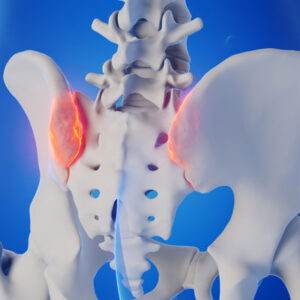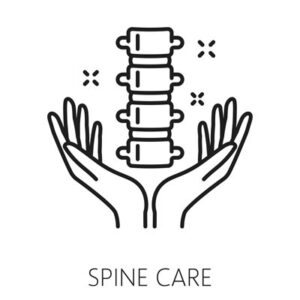As a sports medicine physician, I’ve seen firsthand how targeted therapeutic techniques can benefit athletes of all levels. Sports therapy is a crucial component in improving performance, accelerating recovery, and preventing injuries. Let’s explore this field in depth.
What is Sports Therapy?
Sports therapy is a multidisciplinary approach to athletic care that goes beyond traditional ideas of treatment. It’s not just for elite athletes; anyone engaged in physical activity can benefit from these techniques. Modern sports therapy integrates various methodologies to:
- Accelerate recovery from injuries
- Enhance physical performance
- Prevent future injuries
- Improve overall well-being
The Importance of Recovery in Sports
Recovery is a critical, often underappreciated aspect of athletic training. It’s not merely about rest; it’s an active process of physiological and psychological restoration. Athletes frequently encounter challenges such as:
- Muscle soreness and fatigue
- Joint stiffness
- Reduced range of motion
- Mental exhaustion
Effective sports therapy addresses these issues, promoting better performance and reducing the risk of burnout and injuries.
The Science Behind Sports Therapy
The efficacy of sports therapy is well-supported by scientific research. Its benefits are both physiological and psychological:
Physiological effects:
- Enhanced blood circulation
- Reduced inflammation
- Accelerated tissue repair
Psychological effects:
- Decreased stress levels
- Improved mood
- Enhanced mental resilience
Regular application of sports therapy techniques can lead to:
- Faster healing processes
- Improved muscle strength and flexibility
- Enhanced athletic performance
- Reduced injury incidence
Fundamental Techniques in Sports Therapy
Hydrotherapy: Making a Splash in Recovery
Hydrotherapy utilizes water’s properties to facilitate recovery and rehabilitation. Key techniques include:
- Cold water immersion: Effective for reducing inflammation and alleviating muscle soreness.
- Contrast therapy: Alternating between hot and cold water to stimulate circulation.
- Aquatic exercises: Low-impact activities that are particularly beneficial for joint rehabilitation.
Active Recovery: Keep Moving to Feel Better
Active recovery involves light, low-intensity exercise to promote healing. Examples include:
- Light jogging or brisk walking
- Gentle yoga or stretching routines
- Low-intensity swimming
These activities enhance blood flow, reduce muscle stiffness, and facilitate the removal of metabolic waste products from muscles.
Compression Garments: Squeeze Your Way to Success
Compression garments apply external pressure to specific body parts, improving circulation and reducing edema. For optimal results:
- Wear them during or immediately after exercise
- Ensure proper sizing for adequate pressure
- Avoid prolonged use without breaks
Massage Therapy: Hands-On Healing
Massage therapy is a cornerstone of sports therapy, offering both recovery and performance benefits. Common techniques include:
- Swedish massage
- Deep tissue massage
- Sports-specific massage
- Trigger point therapy
These techniques can reduce muscle tension, improve flexibility, and accelerate recovery times.
Nutrition: Fueling Your Recovery
Proper nutrition is integral to the recovery process. Key nutrients for athletic recovery include:
- Proteins: Essential for muscle repair and growth
- Carbohydrates: Replenish glycogen stores and support muscle recovery
- Fats: Necessary for hormone production and reducing inflammation
- Adequate hydration: Crucial for all physiological processes
A sample recovery-focused meal plan might look like this:
- Breakfast: Whole grain oatmeal with berries and whey protein
- Lunch: Grilled chicken salad with mixed vegetables and quinoa
- Snack: Greek yogurt with nuts and honey
- Dinner: Baked salmon with sweet potato and steamed broccoli
- Before bed: Casein protein shake or low-fat cottage cheese
It’s important to note that nutritional needs vary among individuals. Consultation with a sports nutritionist is recommended for personalized advice.
Psychological Aspects of Recovery
The psychological component of recovery is as crucial as the physical aspect. Mental recovery techniques include:
- Mindfulness practices: Enhance present-moment awareness to reduce stress and anxiety
- Meditation: Improve focus and emotional regulation
- Relaxation techniques: Deep breathing exercises or progressive muscle relaxation can promote physical and mental calmness
Incorporating these practices into your routine can significantly enhance mental resilience and overall recovery.
Case Studies: Success Stories in Sports Therapy
Real-world examples demonstrate the effectiveness of comprehensive sports therapy:
Professional soccer player: Recovered from a grade 2 hamstring strain in 4 weeks (vs. expected 8 weeks) using a combination of hydrotherapy, massage therapy, and targeted exercises.
Marathon runner: Improved personal best time by 15 minutes after implementing a structured recovery program, including compression garments and regular sports massages.
Amateur tennis player: Overcame chronic rotator cuff tendinopathy through physical therapy, corrective exercises, and nutritional modifications.
These cases highlight the potential of a holistic sports therapy approach in enhancing performance and expediting recovery.
See more: Chiropractic Care for Runners
Debunking Common Myths About Sports Therapy
Myth: Sports therapy is only for elite athletes.
Reality: Anyone engaged in regular physical activity can benefit from sports therapy techniques.
Myth: Pain should be pushed through for gains.
Reality: Pain is often a protective mechanism. Ignoring it can lead to more severe injuries.
Myth: Sports therapy is only necessary post-injury.
Reality: Regular sports therapy can be a powerful tool for injury prevention and performance enhancement.
Remember, consistency is key in sports therapy. Each individual’s needs are unique, which is why a personalized approach is always recommended.
SpineWorks Chiropractic is here to help you achieve your physical health goals. Whether recovering from an injury, looking to improve your athletic performance, or simply wanting to maintain an active lifestyle, our team of experienced professionals is ready to support you.
Frequently Asked Questions
Is sports therapy only for professional athletes?
No, sports therapy benefits athletes of all levels, from weekend warriors to professional competitors. The principles of recovery and performance enhancement apply to everyone engaged in physical activity.
How often should I undergo sports therapy sessions?
The frequency of sports therapy sessions depends on factors such as injury severity, fitness level, and recovery goals. A qualified sports therapist can create a personalized treatment plan tailored to your needs.
Can sports therapy prevent injuries?
Yes, sports therapy plays a crucial role in injury prevention. Muscle strengthening, flexibility training, and proper body mechanics can significantly reduce the risk of sports-related injuries.
Will sports therapy help me lose weight?
While sports therapy focuses on recovery and performance, it can indirectly contribute to weight loss. Improved physical function and increased activity levels can support weight management goals.
Does sports therapy involve pain?
Sports therapy techniques are generally designed to alleviate pain, not cause it. However, some treatments might involve temporary discomfort, typically followed by significant pain relief and improved function.





